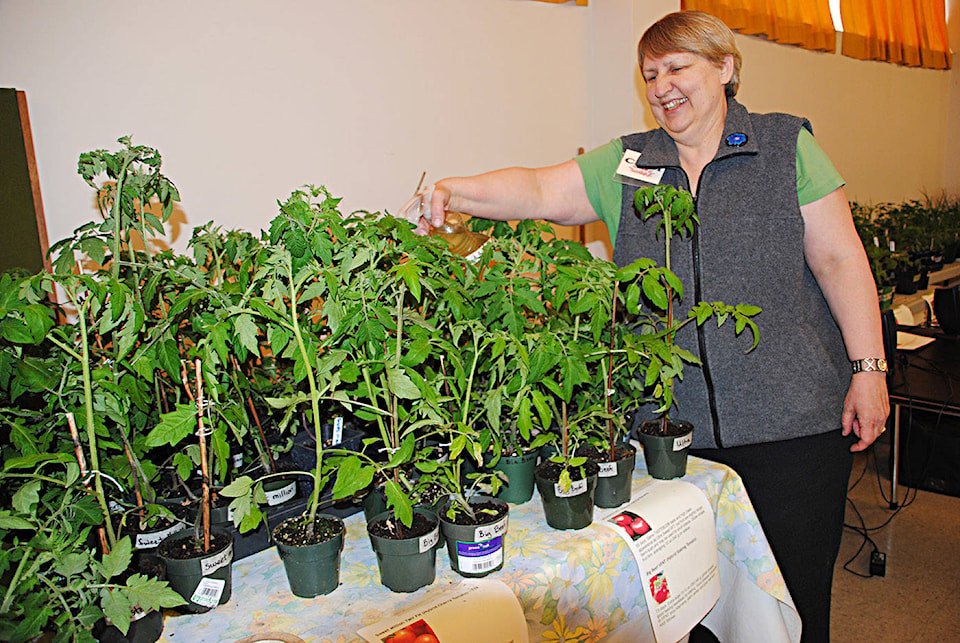Tomato plants are very popular bedding out plants due to the taste of the home grown fruit as opposed to the ones bought in the store.
It is a combination of the just picked taste, as opposed to fruit picked green and ripened artificially and the different varieties available. Each tomato variety offers a distinct taste that can be attributed to the amount of sugar and acid in the fruit.
Tomatoes are a tender, long season crop and must be planted out once all danger of frost has past. They do best in a hot, sunny area in the yard. A south exposure where a building or fence traps sunlight and increases the temperature is ideal. Once the plant is blooming, increase the water supply as required to increase the yield. Consistent watering is essential in preventing blossom end rot.
How to prune tomatoes is determined by how the plant grows; determinate and indeterminate.
Determinate plants are bush tomatoes. The plant grows to a certain height and stop putting all their new growth into side branches. Place a cage around these plants as they will develop multiple stems that will need support to hold the weight of the fruit off of the ground.
Pruning is simple, remove all sprouts or suckers that develop between the main stem and leaves from the ground up to the first bloom. All the side branches above the first bloom should be allowed to grow and produce fruit.
In indeterminate varieties the stems continue to grow upwards until the plant dies. Like the determinate varieties, it is best to remove all sprouts or suckers under the first flower. Then allow four side sprouts to grow and remove the rest. Flowers and fruit will grow on the five stems that are left intact allowing the fruit to grow bigger and sweeter than if more vegetation was allowed to grow. It is best to check and remove suckers regularly.
Attaching the plant to a tall stake, fence or a string from above will give plants the needed support.
Insects and wind pollinate tomatoes but it doesn’t hurt to give nature a hand by gently jiggling the plant.
Fertilize tomato plants regularly to ensure the plants have all the nutrients required to thrive. A basic fertilizer that is high in the last 2 numbers potassium and potash works but one that is formulated and labeled for tomatoes should also contain needed trace elements such as calcium and magnesium that help prevent blossom end rot. Potassium and potash are primarily responsible for the formation of flowers and fruit. Nitrogen, the first number in a fertilizer formula increases the amount of leaves and stems formed. Not something that is wanted in tomato production.
White fly and aphids can be a problem but only if the plants are crowded and air is not allowed to circulate around the plants.
Tomatoes need not be planted only in the vegetable garden. Add a pot on the deck or plant in a hot part of the flower garden. Try a cherry tomato that will make great snacks.
Linda Tomlinson is a horticulturalist who has gardened in central Alberta for over 30 years. She can be reached at your_garden@hotmail.com.
